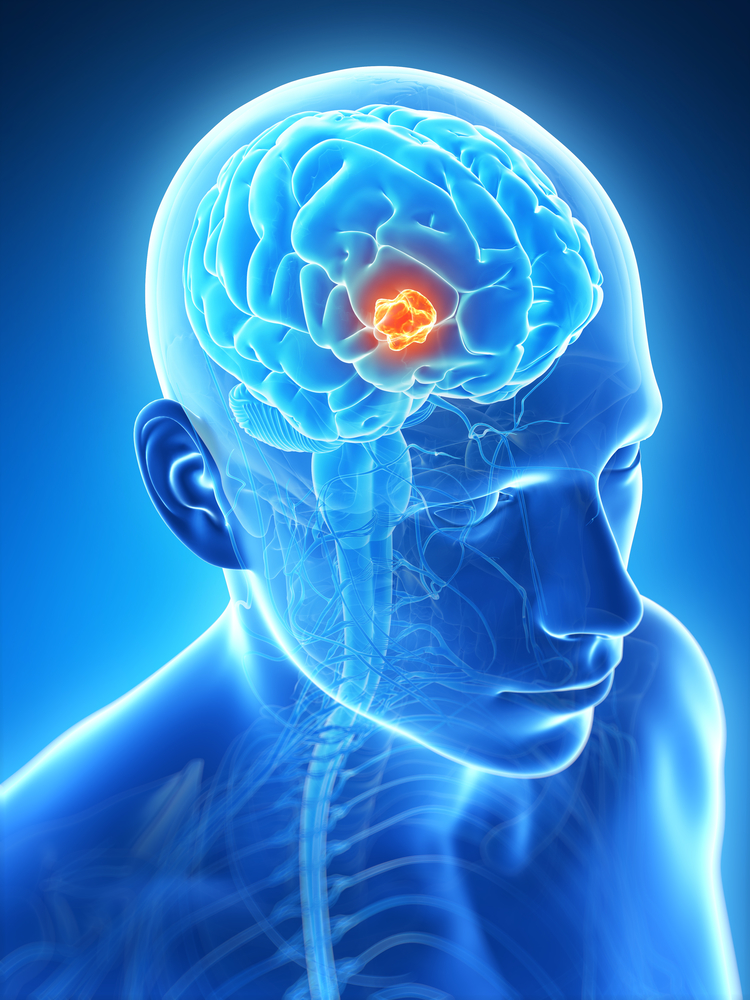During development, the major classes of neural cells are derived from cells of the neuroepithelium. At present, it is not known how the fate of these divergent cell types is determined or how they relate to highly heterogeneous brain tumors. To date, there is also a lack of understanding of the cells of origin for distinct tumor types.1
To design therapeutic approaches for treating brain tumors requires an understanding of the signal transduction pathways utilized by different tumor cells for regulating cell fates (including cell differentiation, proliferation and death). Any findings in this area will need to be compared to signal transduction pathways in normal neural progenitors.
An understanding of tumor cell biology also depends on defining interactions between tumor cells and their immediate neural environment to elucidate how the environment influences tumor cell behavior and how tumor cells influence local neural function.
Interesting progress has been made in this area in recent years. In one study by Staflin, et al.,2 it was demonstrated that neural progenitor cell lines could inhibit rat tumor growth when injected into the nucleus caudatus brain region of living rats. Other recent studies have demonstrated the ability of transplanted neural stem and progenitor cells to migrate towards a tumor mass in animal models of brain tumors, primarily gliomas.3,4,5,6 There is also evidence that endogenous neuronal precursors from the subventricular zone of the forebrain can respond and migrate towards tumors induced in the forebrain.7
Therefore, the use of neural progenitor cells for treating intracranial tumors is an interesting and active area of research.
However, there are a number of challenges and questions that have yet to be answered in this area. These include:
- What are the cells of origin that give rise to distinct brain tumor types?
- How do distinct brain tumor types correlate with neural progenitors in the developing CNS?
- Are distinct tumor types derived from multipotent stem cells? Specified progenitor cells in the developing CNS? Specified progenitor cells in the adult CNS? Differentiated cells in the adult CNS?
- What approaches will yield a comprehensive molecular characterization of tumor and normal neural progenitor cells?
- What extracellular and intracellular signaling systems regulate the fate of brain tumor cells?
- Are signaling pathways in tumor cells similar to those utilized by normal neural cells during development?
- Can specific molecular targets be identified in tumor signal transduction pathways for therapeutic treatments?
- What are the functionally significant cellular interactions between the founder cells of neural tumors and the local neural environment
Want to be better informed than your competition? Get future stem cell industry updates.
About Us
BioInformant is the only research firm that has served the stem cell sector since it emerged. Our management team comes from a BioInformatics background – the science of collecting and analyzing complex genetic codes – and applies these techniques to the field of market research. BioInformant has been featured on news outlets including the Wall Street Journal, Nature Biotechnology, CBS News, Medical Ethics, and the Center for BioNetworking. Serving Fortune 500 leaders that include GE Healthcare, Pfizer, Goldman Sachs, Becton Dickinson, and Thermo Fisher Scientific, BioInformant is your global leader in stem cell industry data.
Click here to view our global strategic reports for the stem cell and cord blood industry.
Footnotes:
1 Miller R and Pomeroy S. “Neurobiology: Progenitor Cells.” National Institute of Neurological Disorders and Stroke. Available at: http://www.ninds.nih.gov/find_people/groups/brain_tumor_prg/NeuroProgenitor.htm.
2 Staflin, et al. Neural Progenitor Cell Lines Inhibit Rat Tumor Growth in Vivo. Cancer Research 2004; 64: 5347-5354. Available at: http://cancerres.aacrjournals.org/cgi/content/abstract/64/15/5347.
3 Aboody, K. S. et al. “Neural stem cells display extensive tropism for pathology in adult brain: evidence from intracranial gliomas.” Proc Natl Acad Sci U S A. 2000; 97: 12846-12851.
4 Glass, R. et al. “Glioblastoma-induced attraction of endogenous neural precursor cells is associated with improved survival.” J Neurosci 2005;25: 2637-2646.
5 Yang, SY, Liu, H and Zhang, JN. “Gene therapy of rat malignant gliomas using neural stem cells expressing IL-12.” DNA Cell Biol 2004;23: 381-389.
6 Shah, K. et al. “Glioma therapy and real-time imaging of neural precursor cell migration and tumor regression.” Ann Neurol 2005; 57: 34-41.
7 Glass, R. et al. “Glioblastoma-induced attraction of endogenous neural precursor cells is associated with improved survival.” J Neurosci 2005; 25: 2637-2646.
